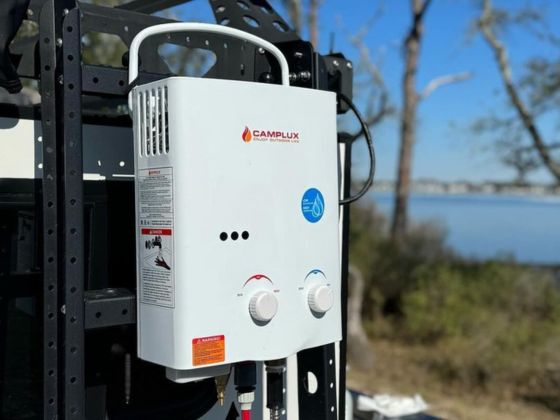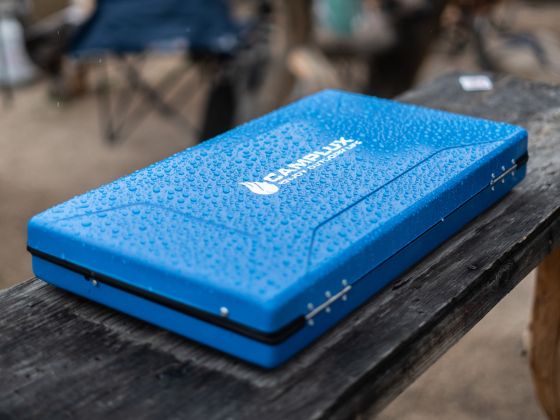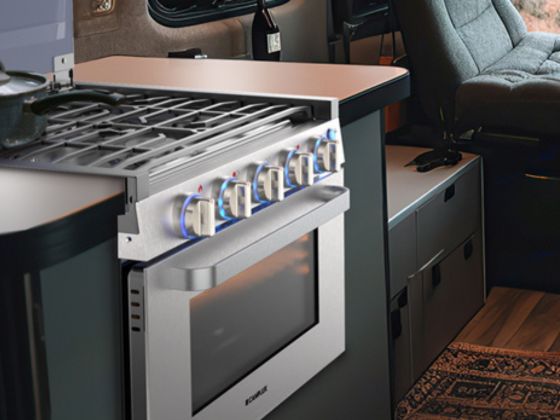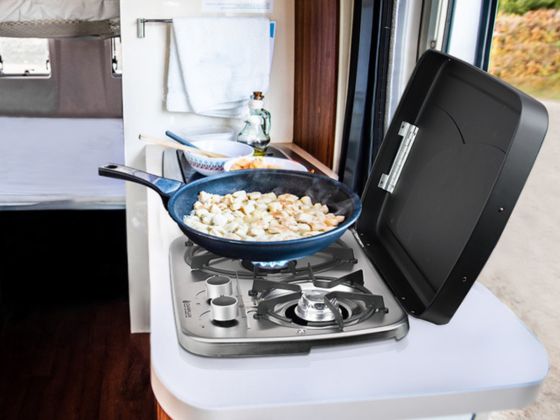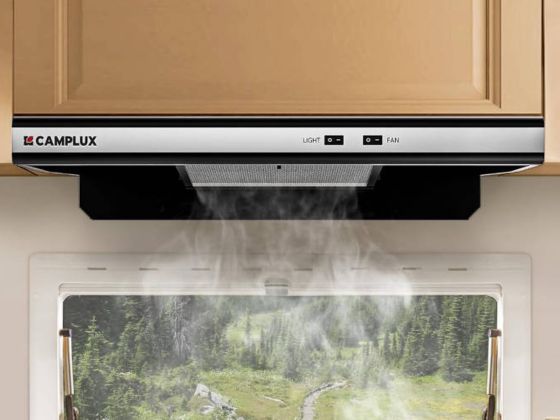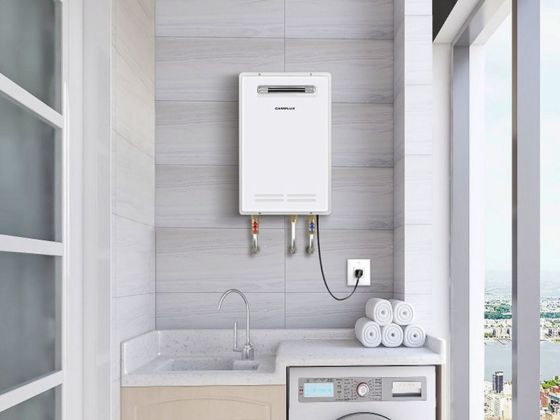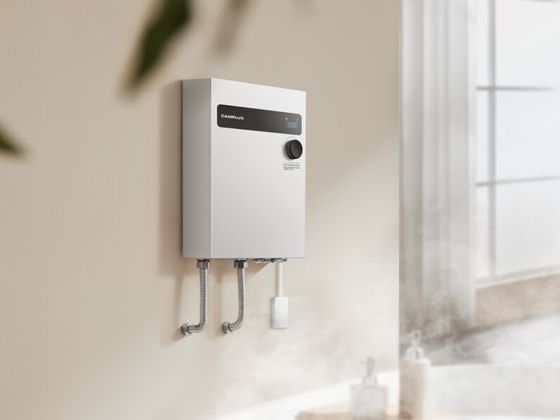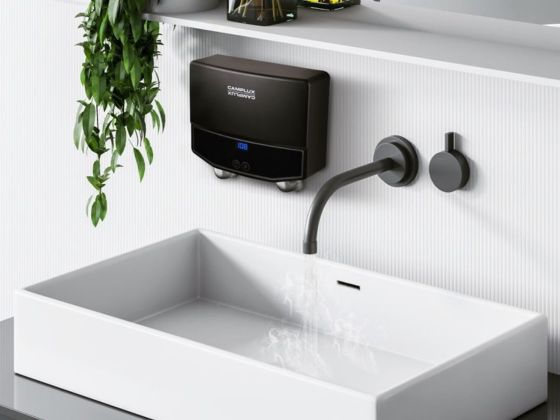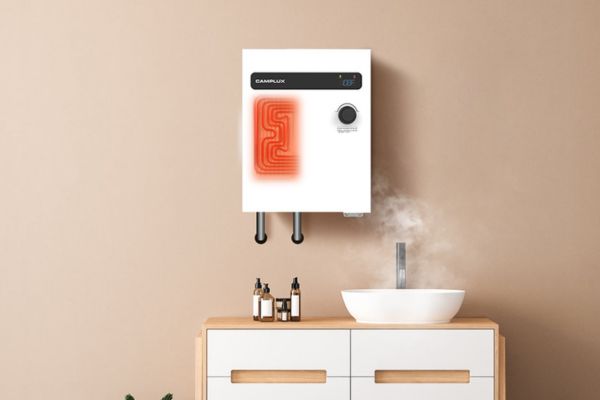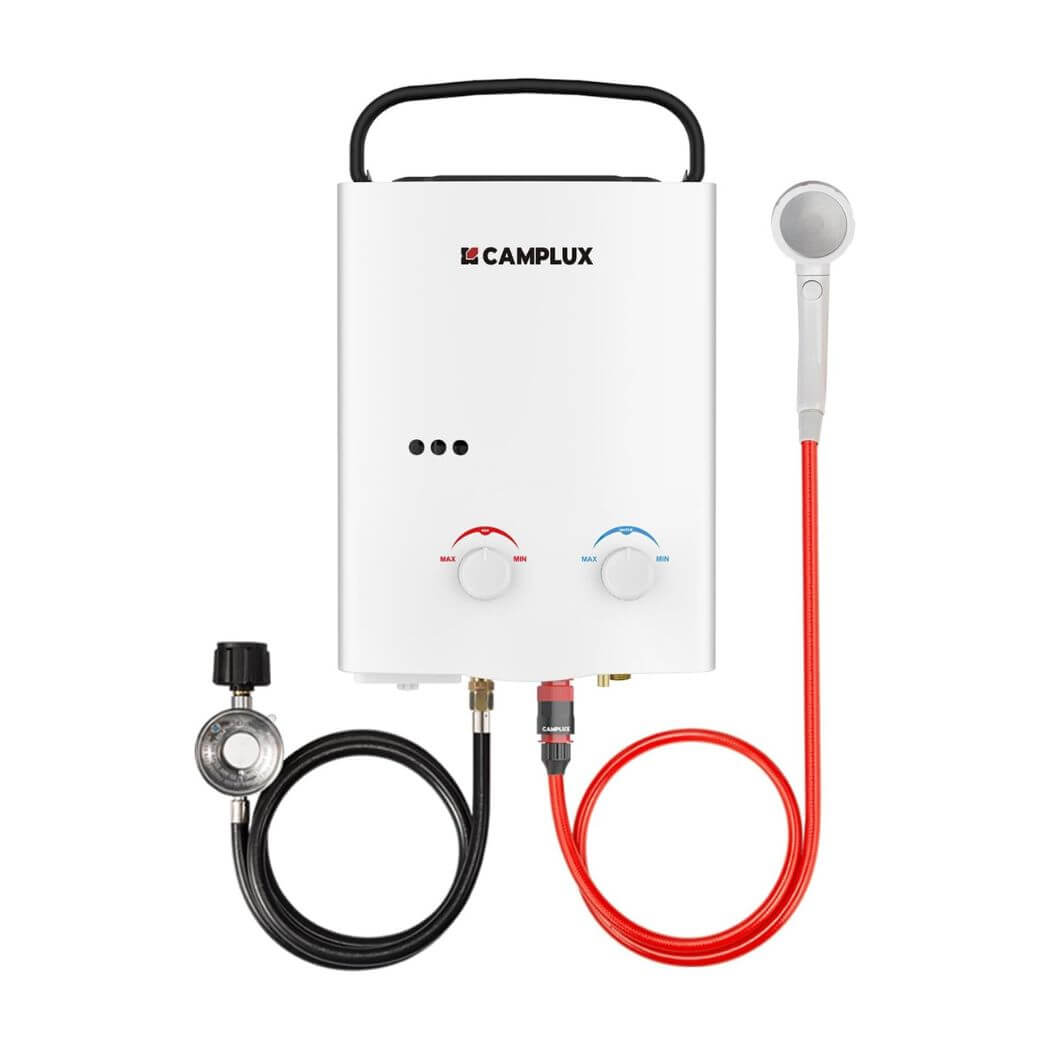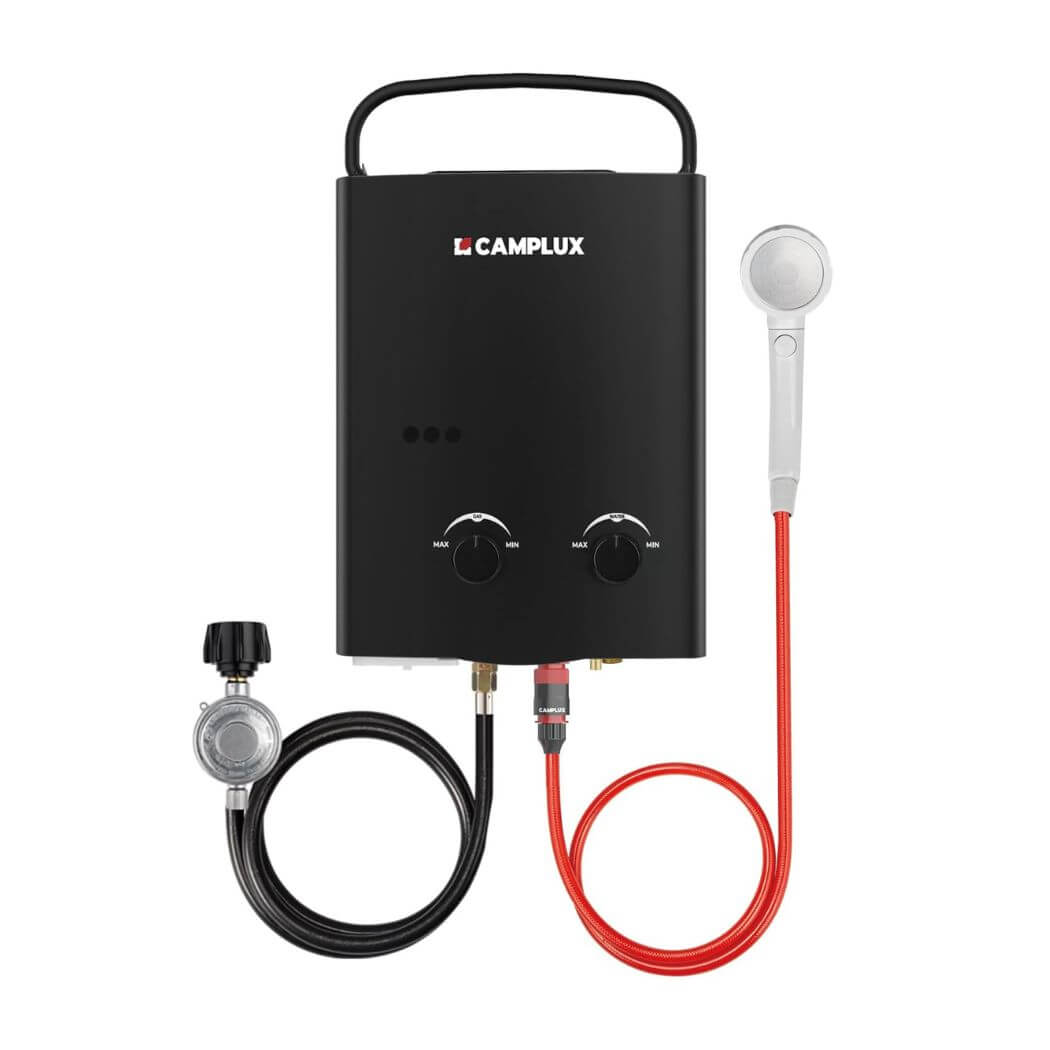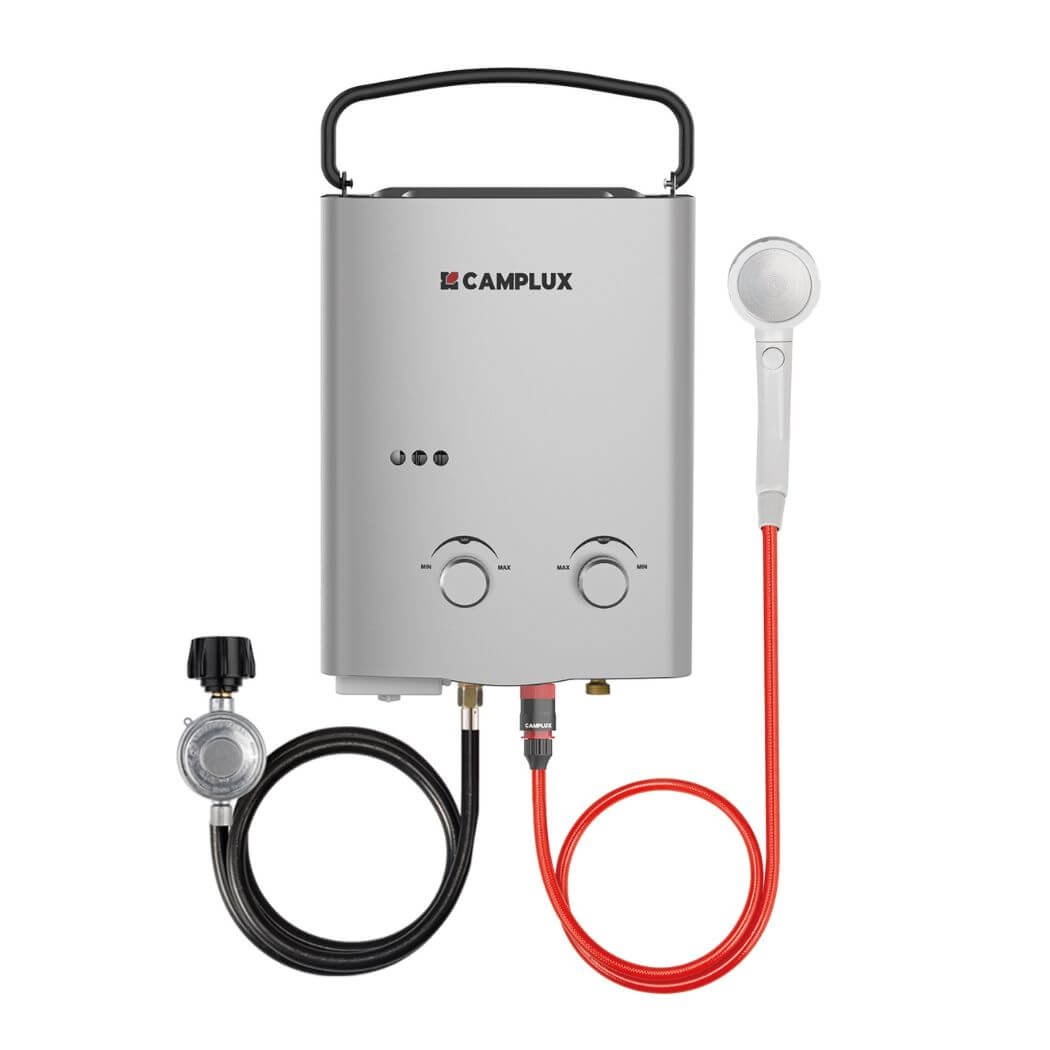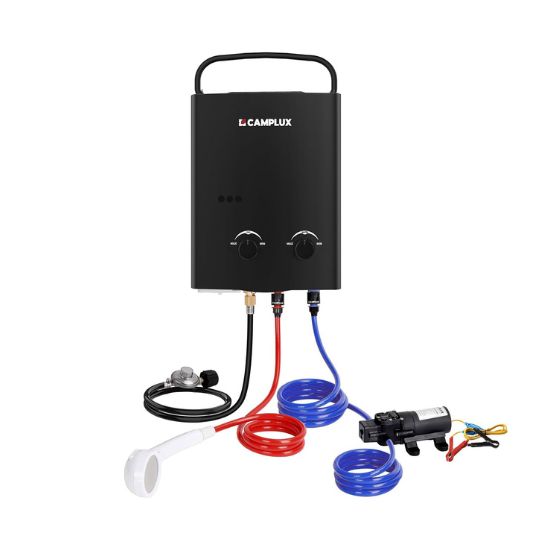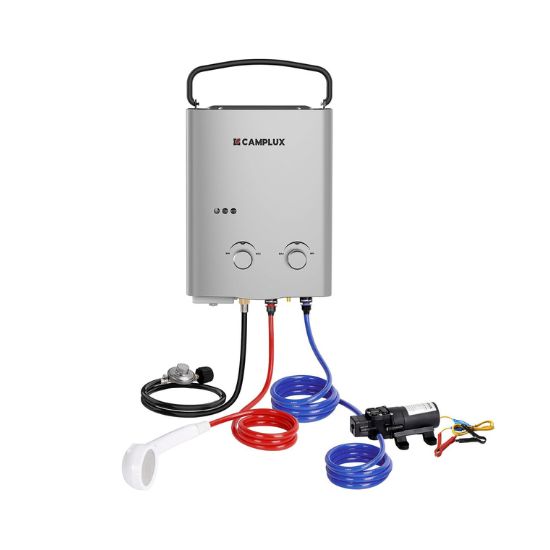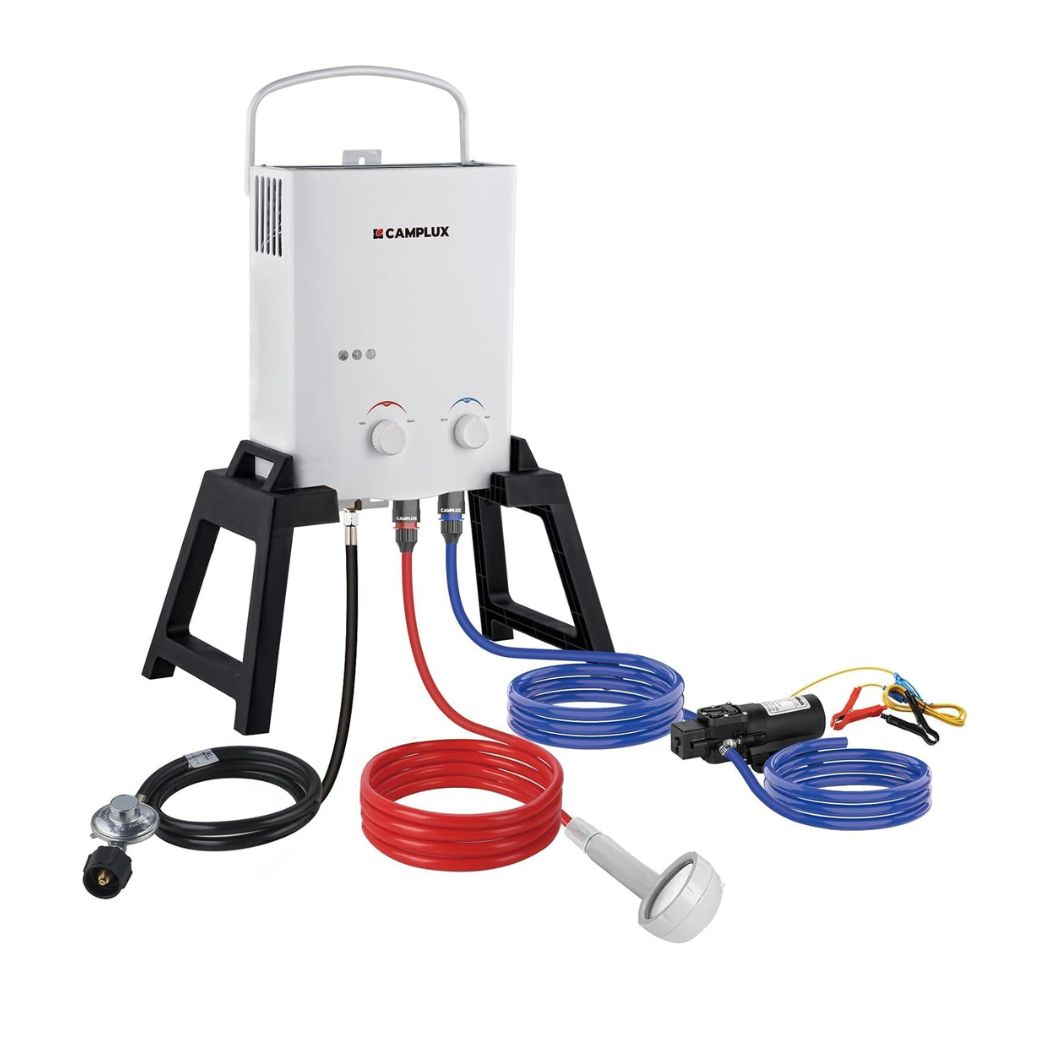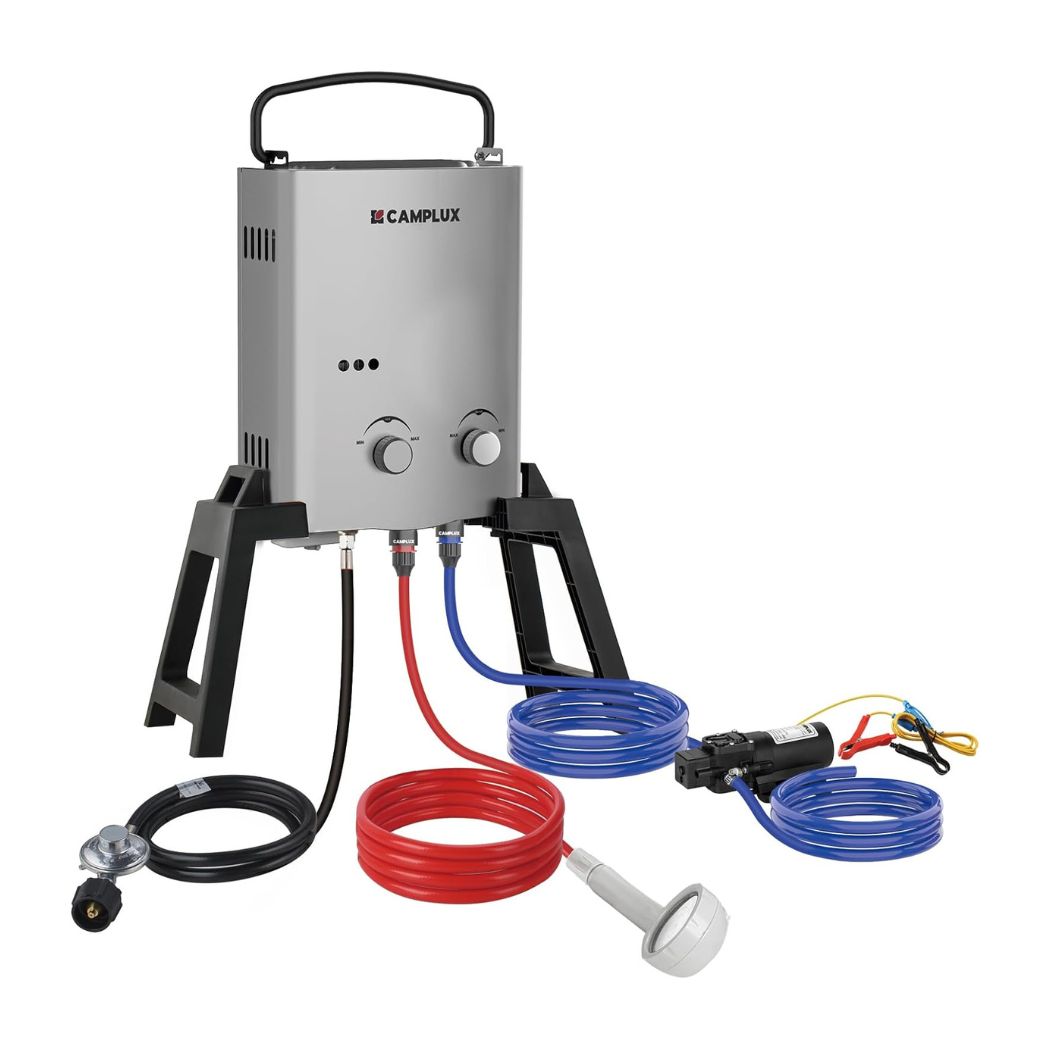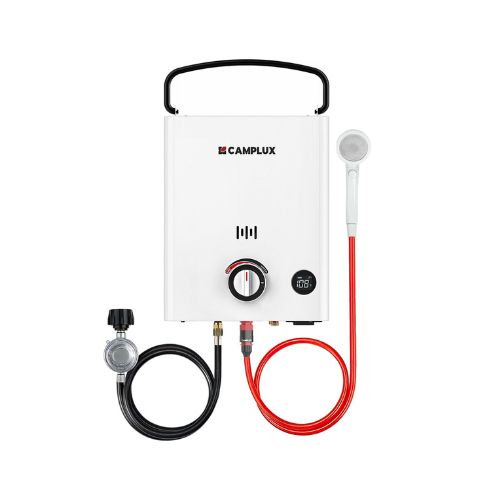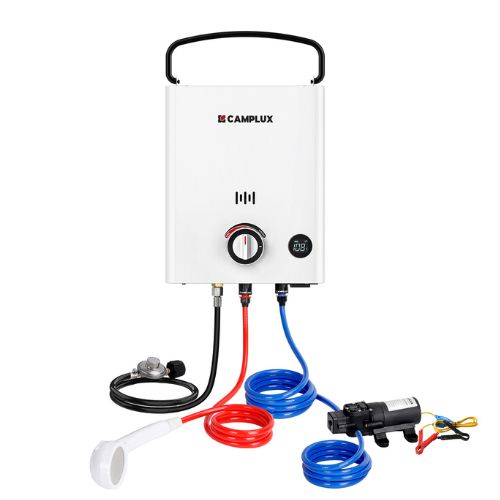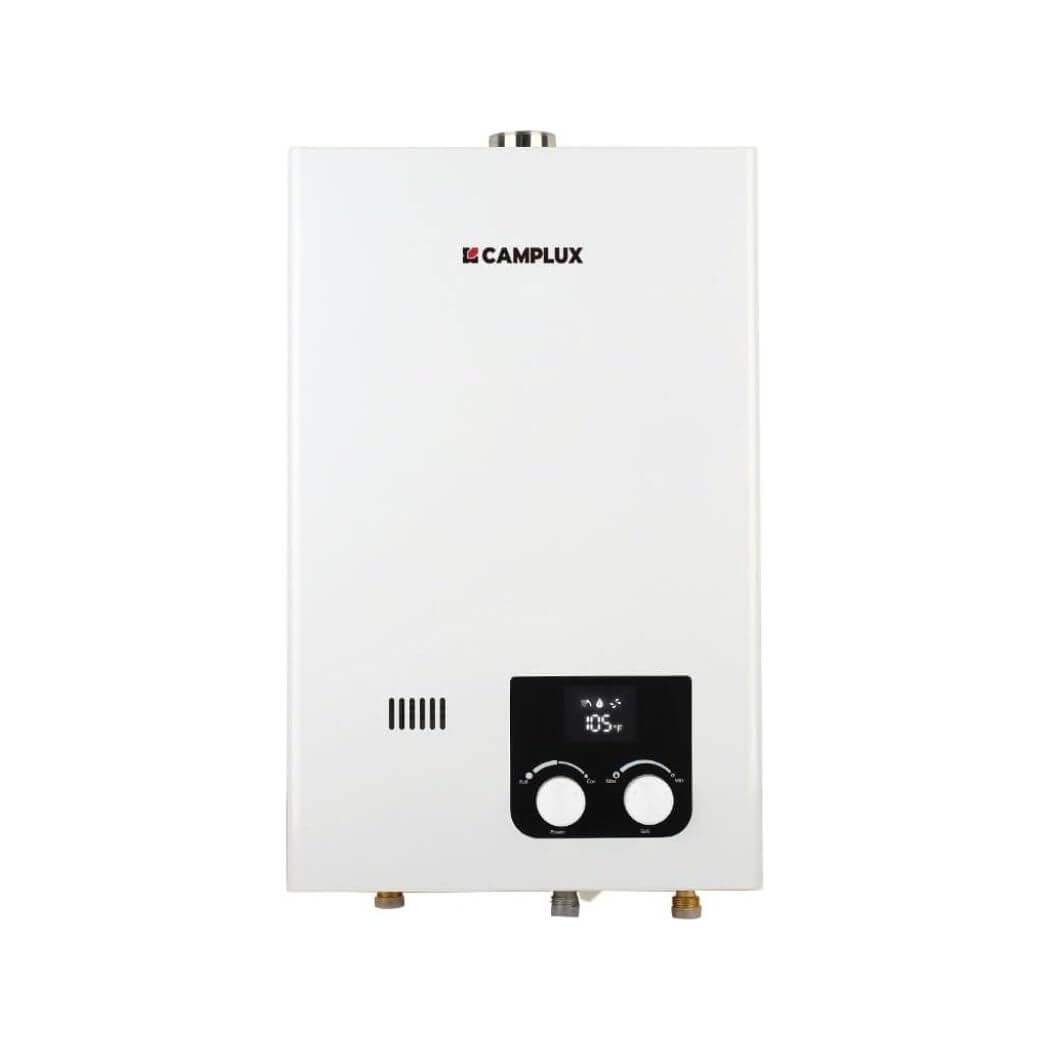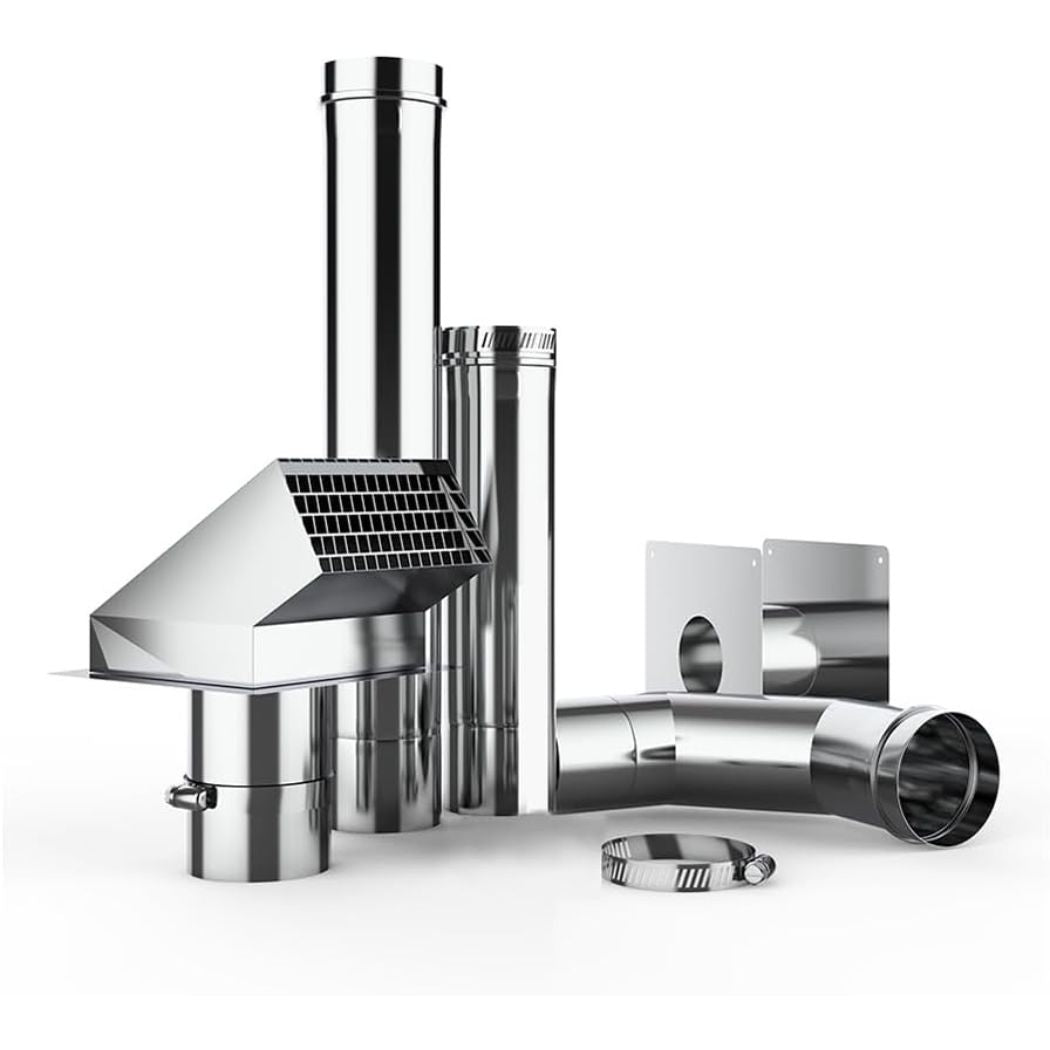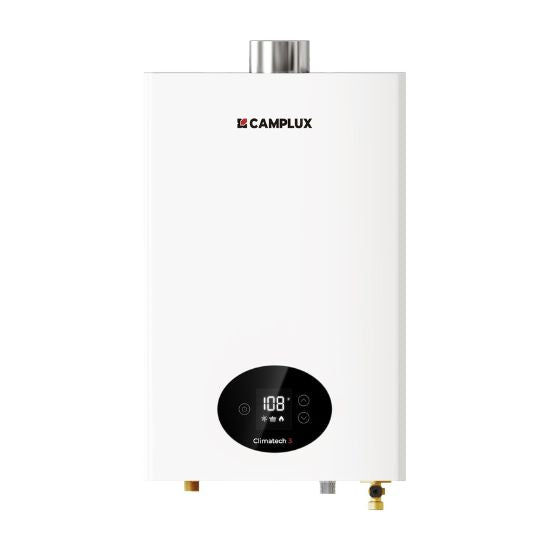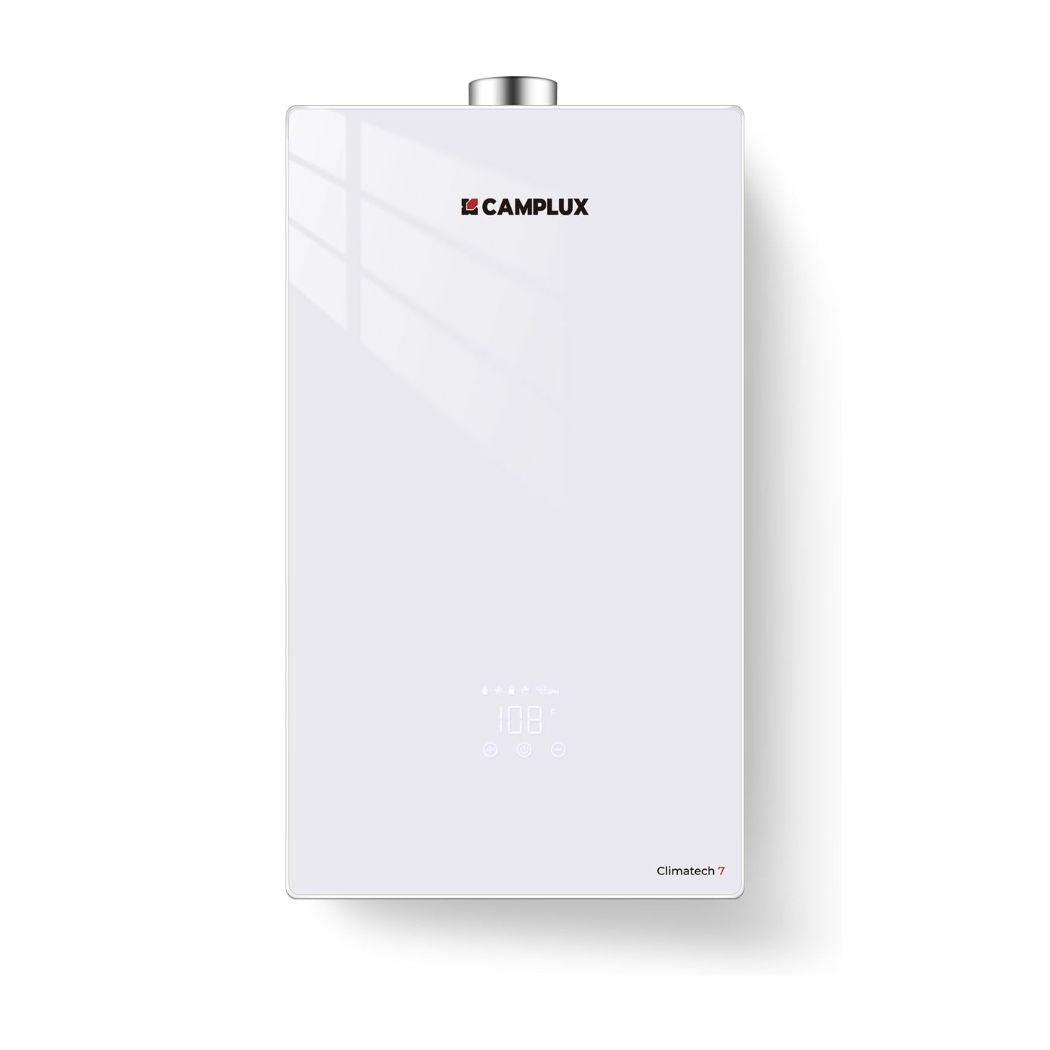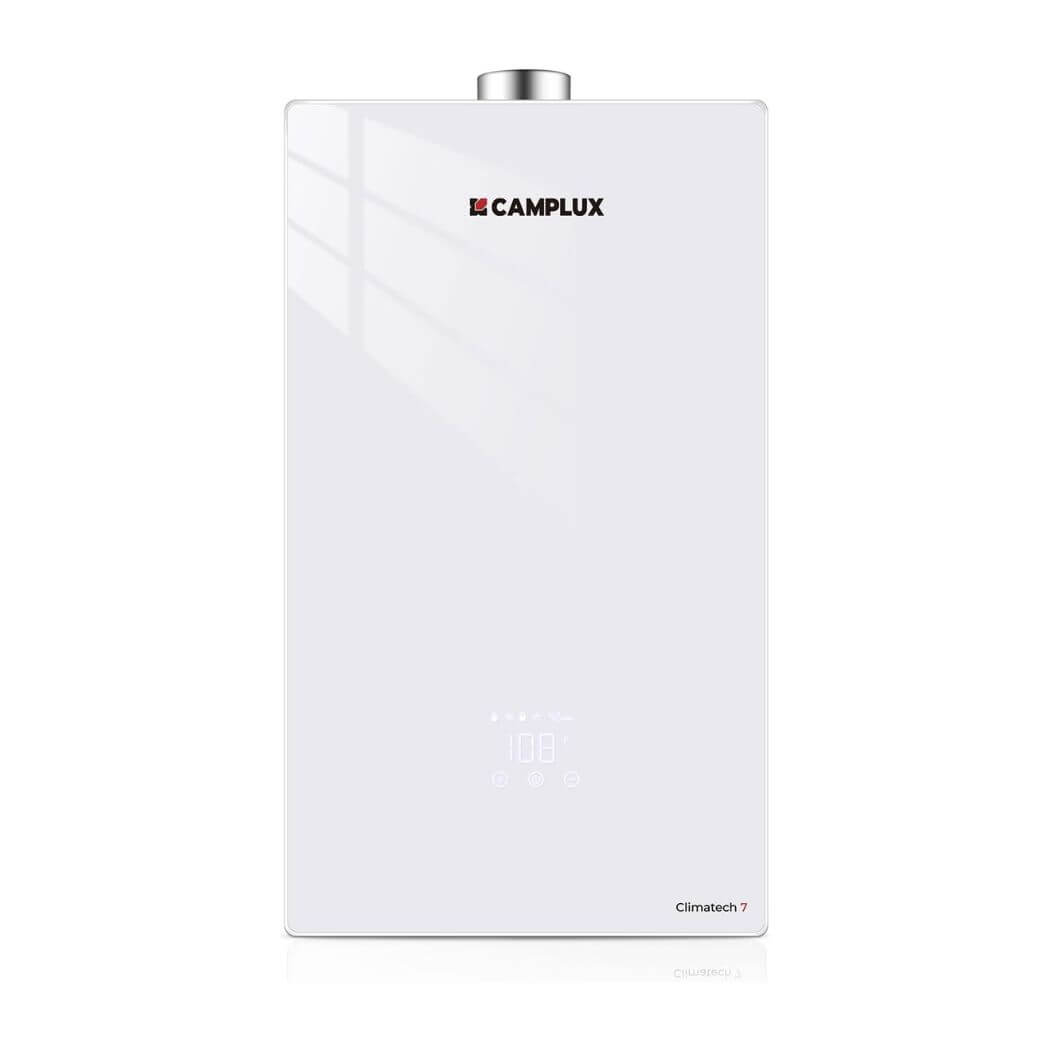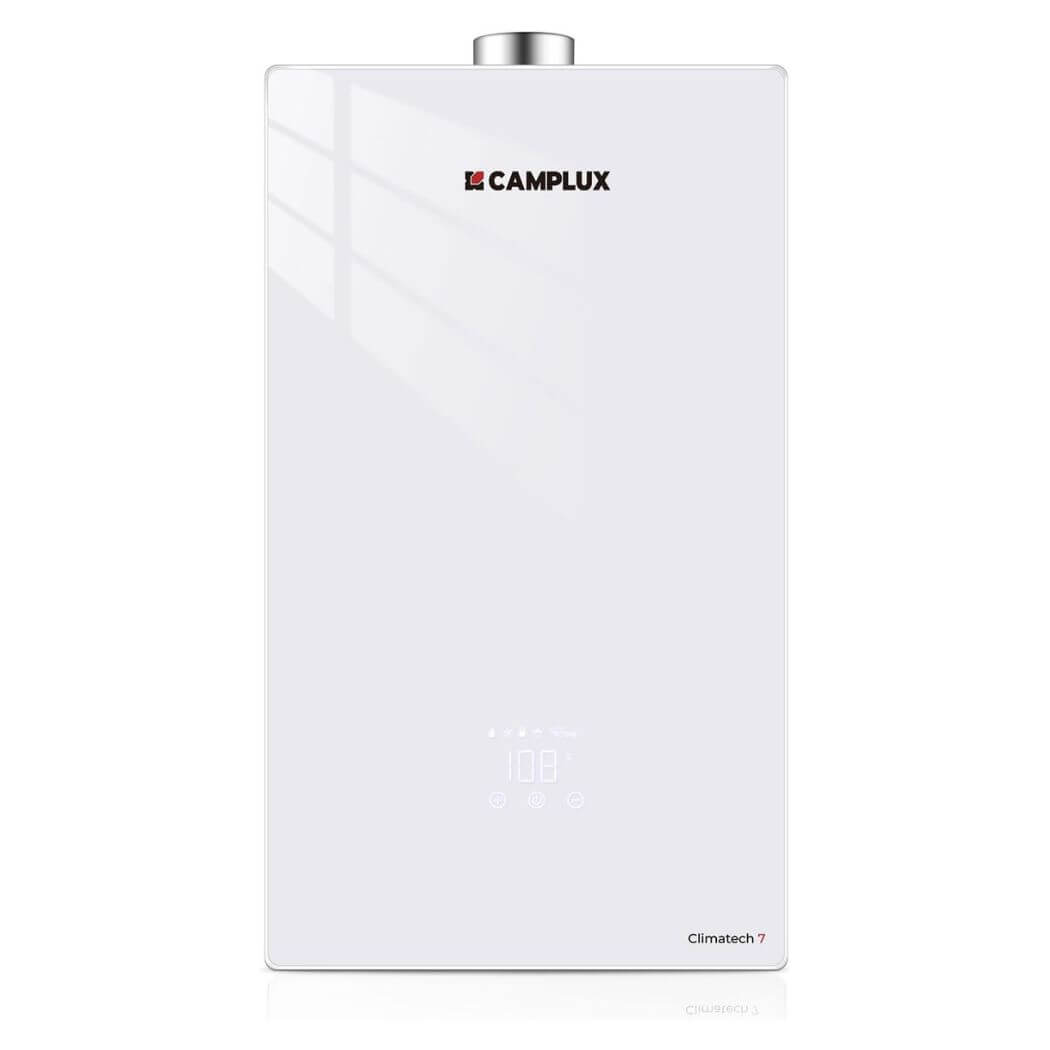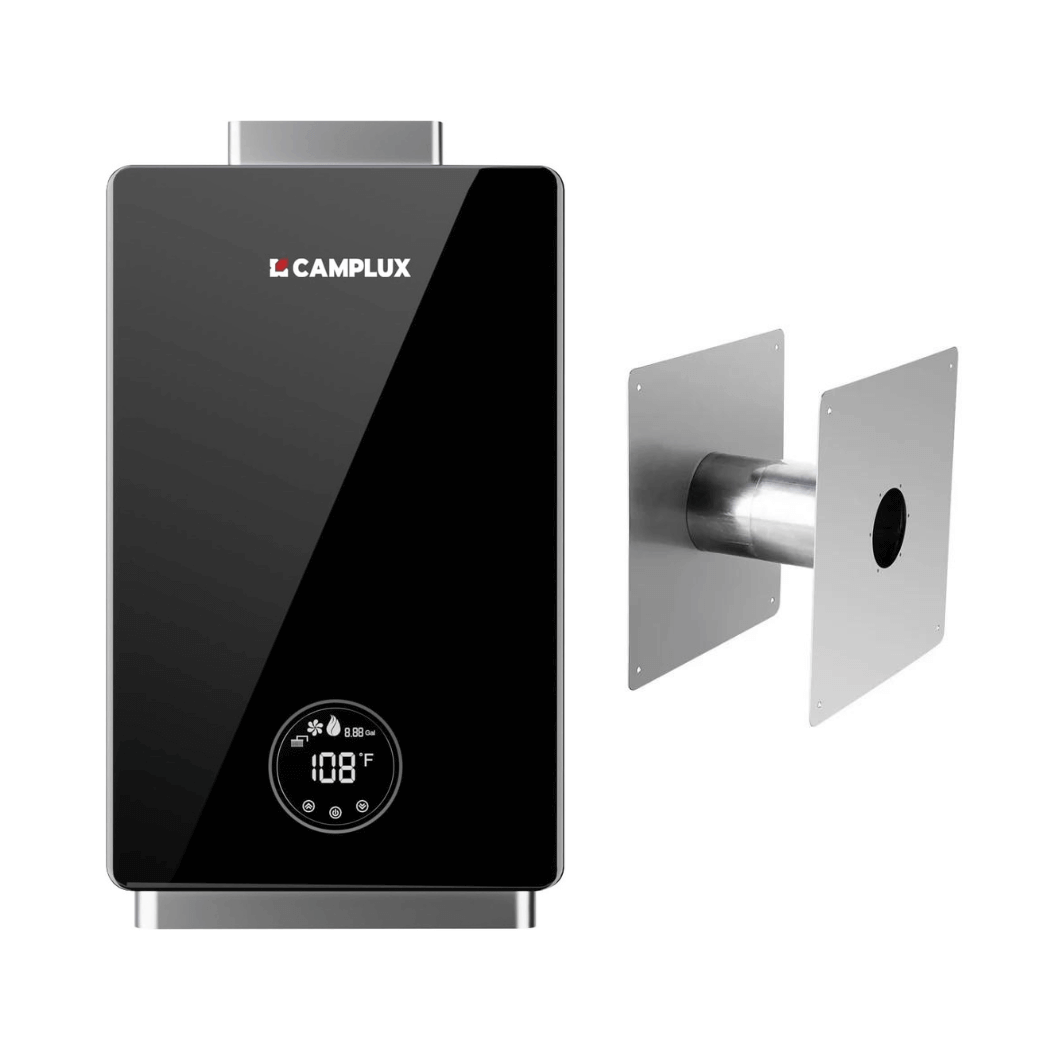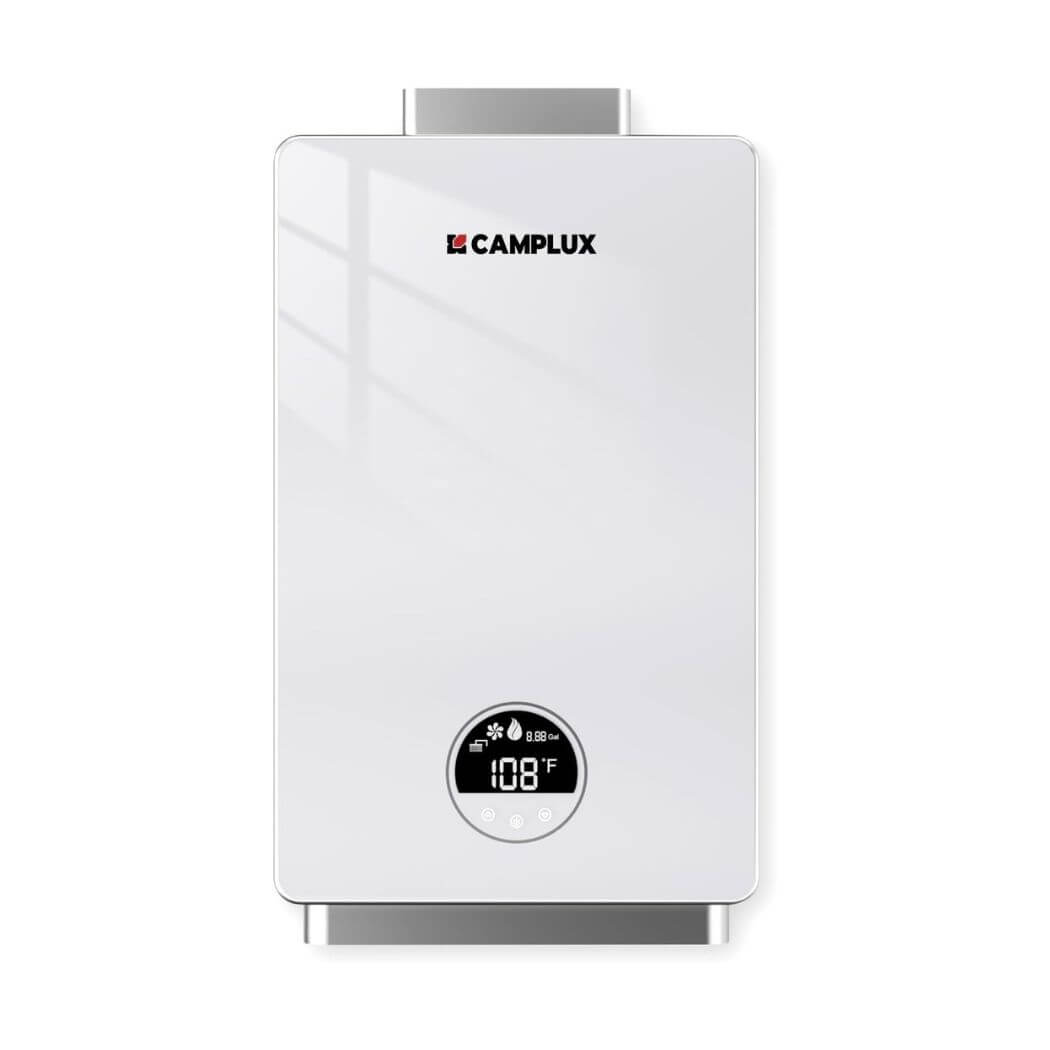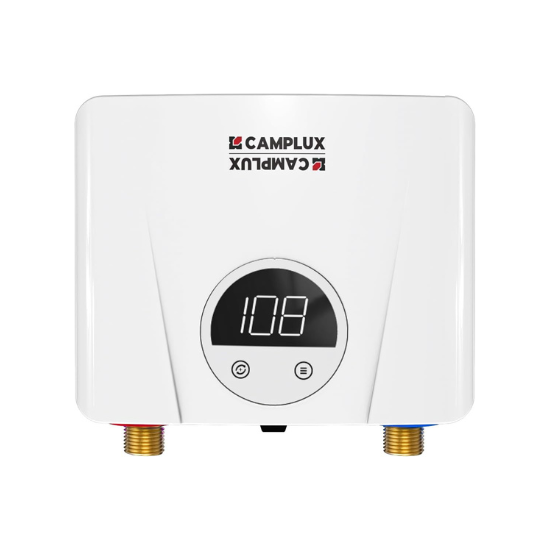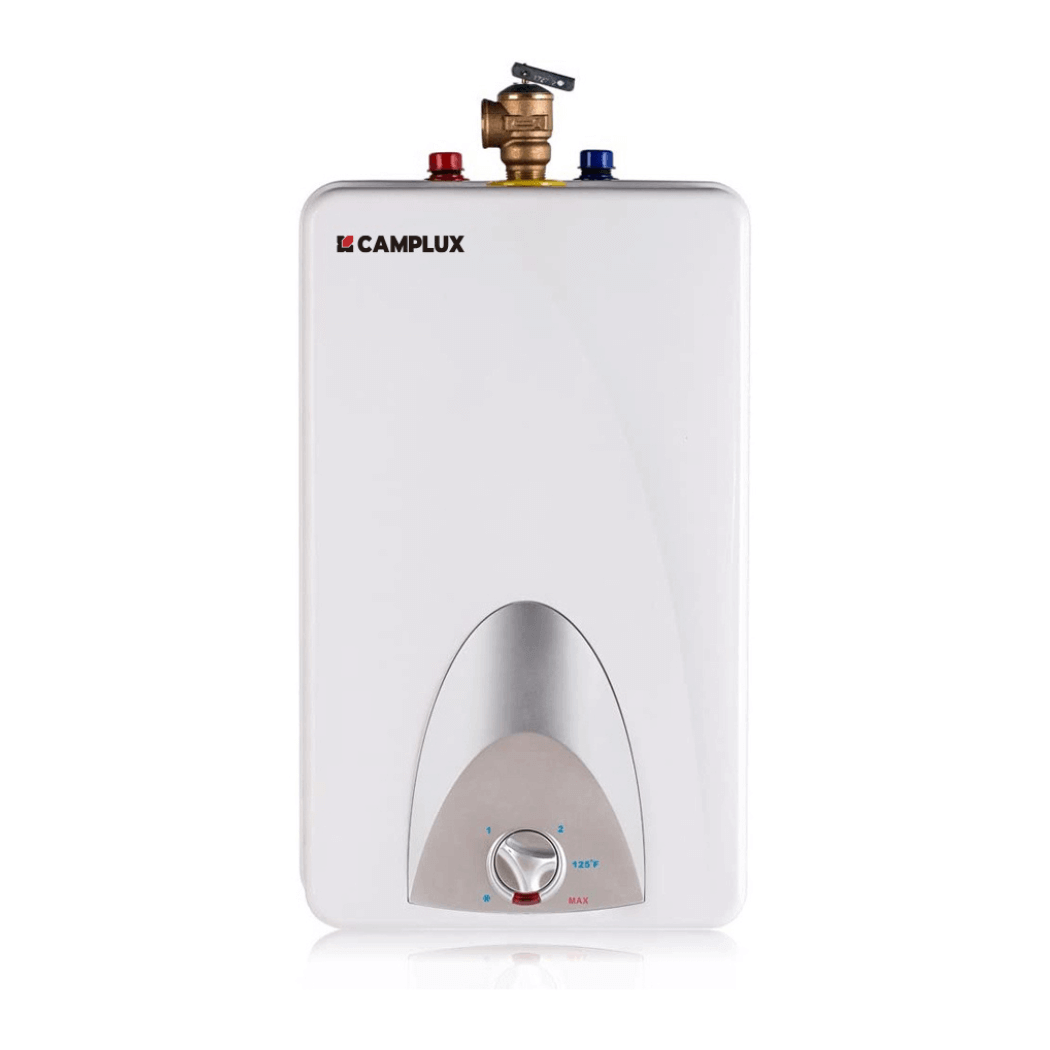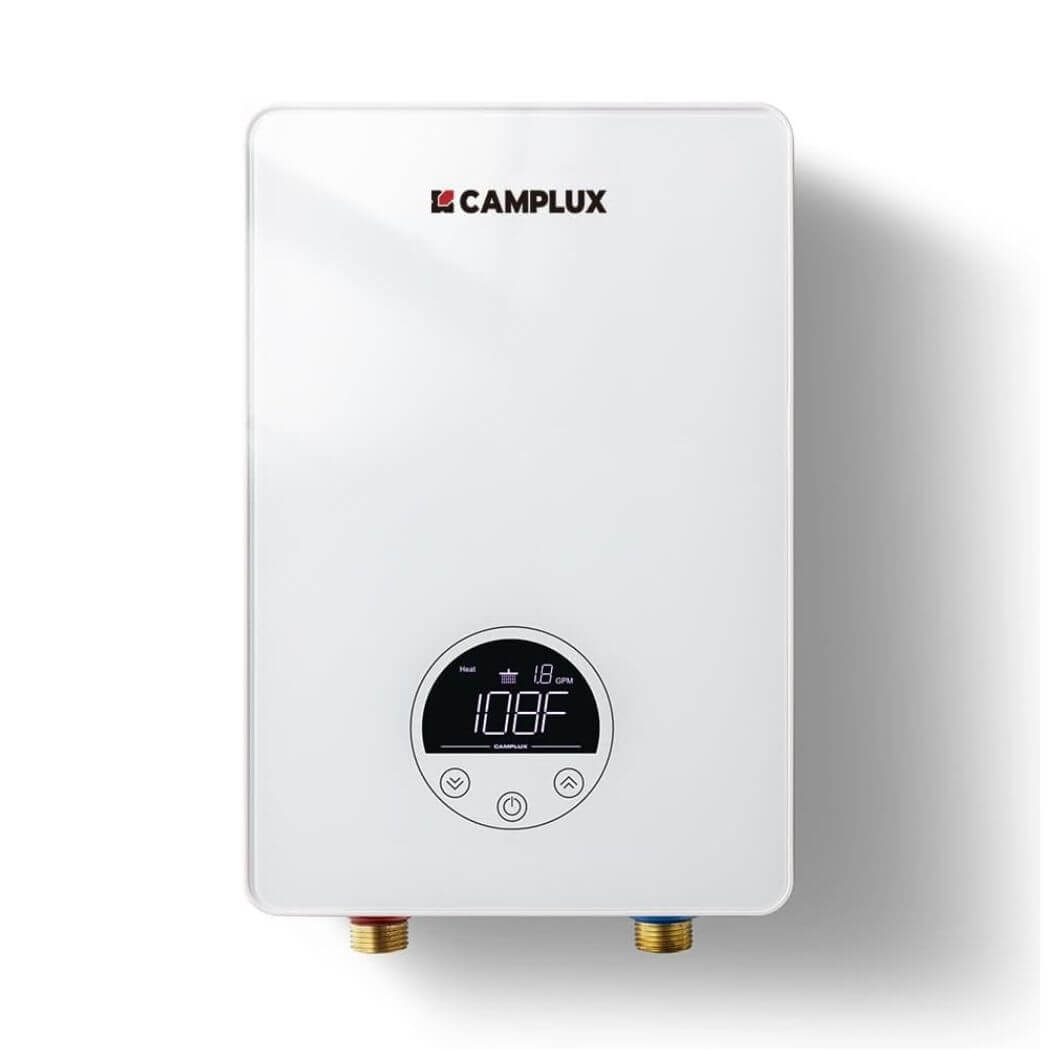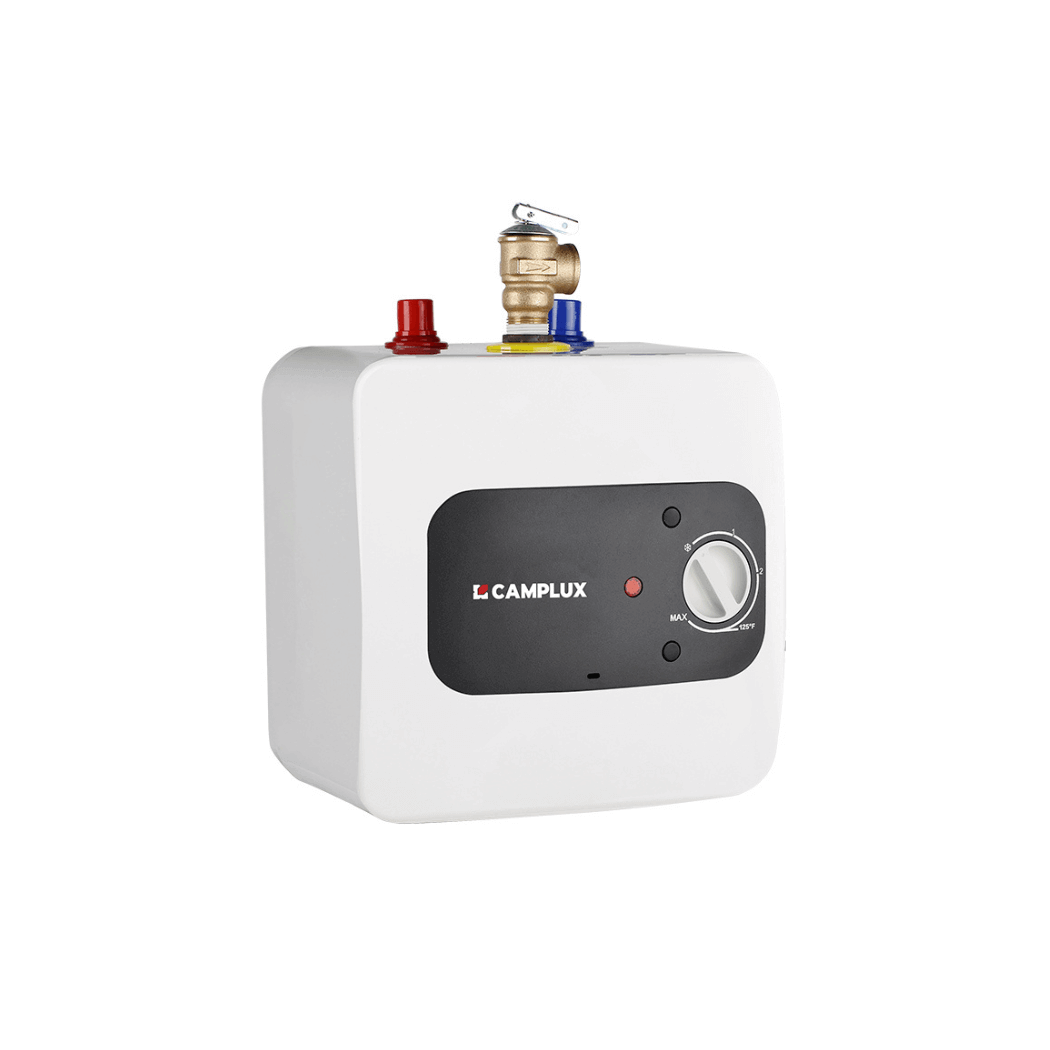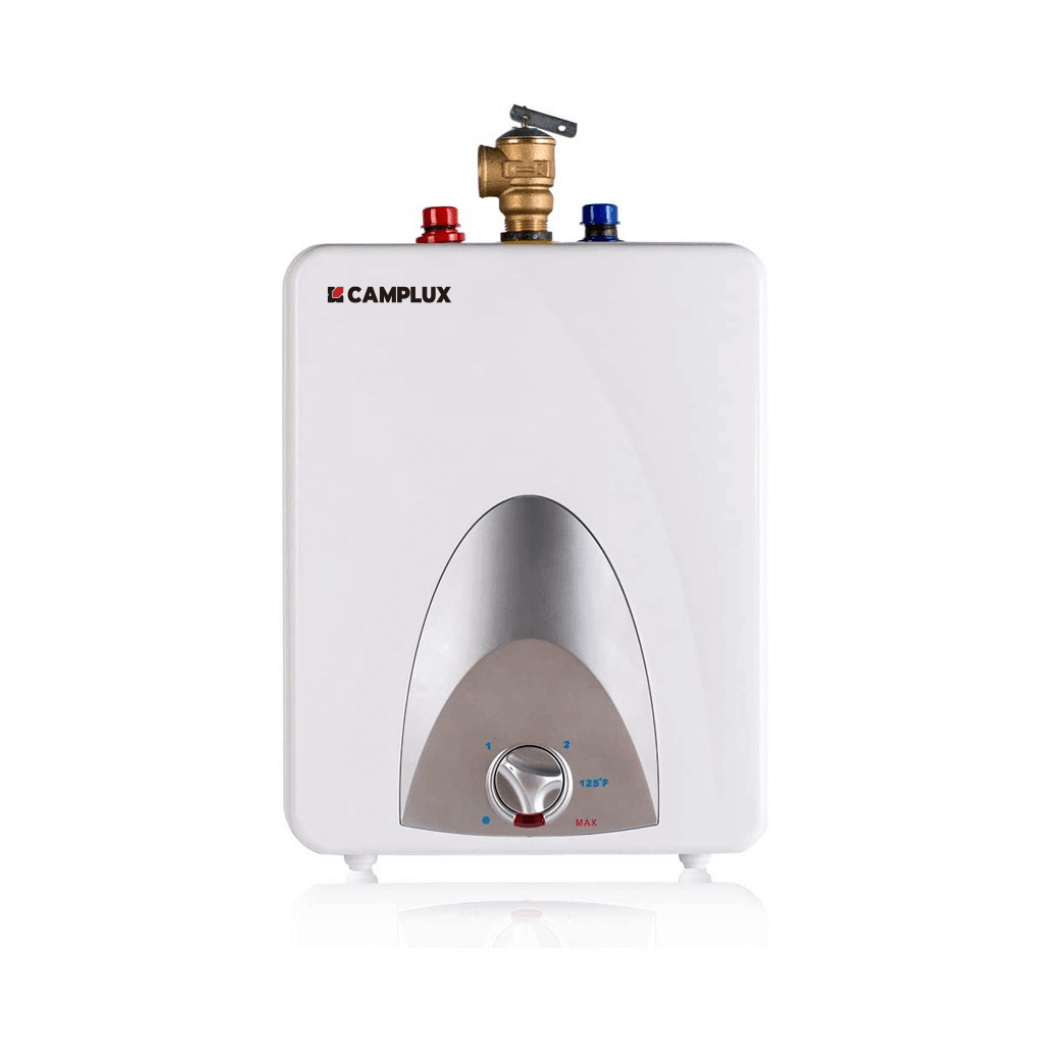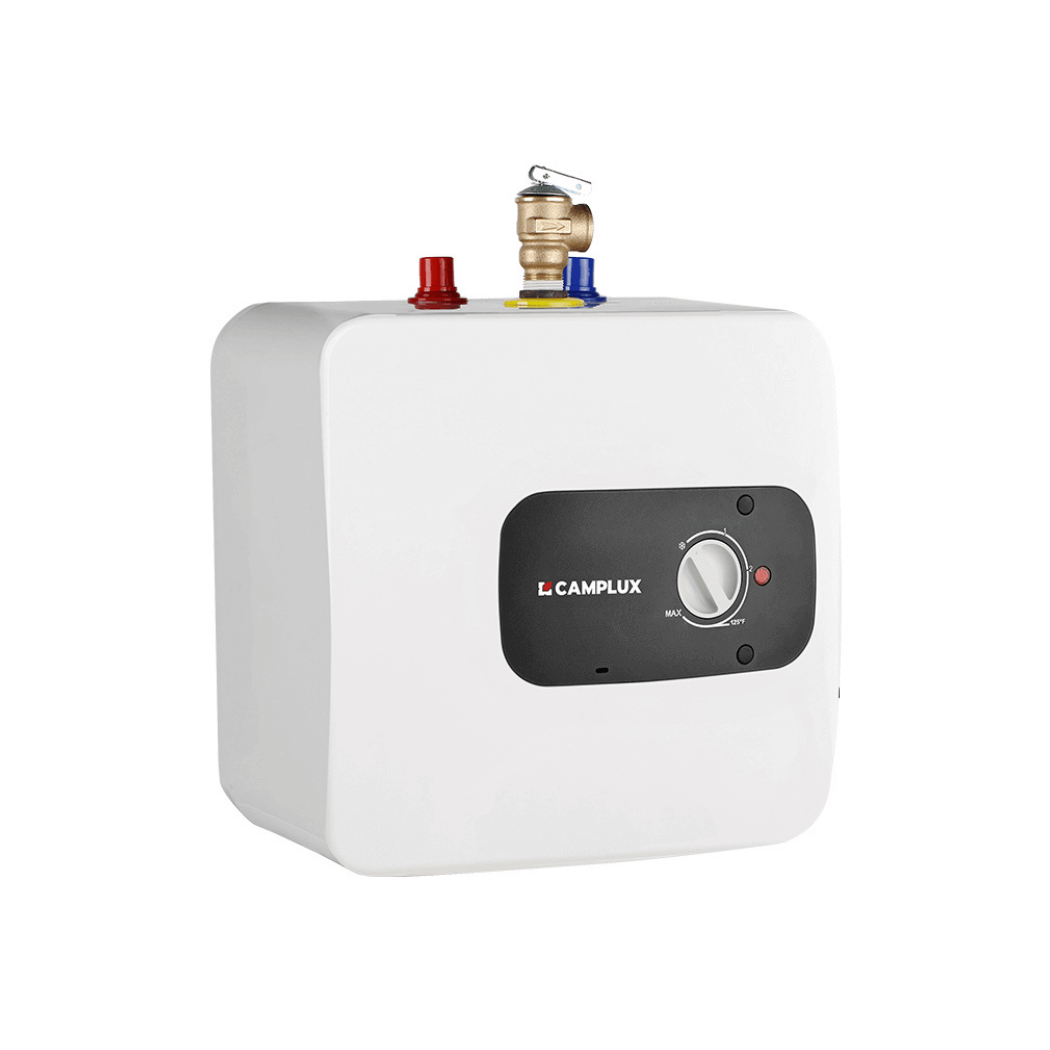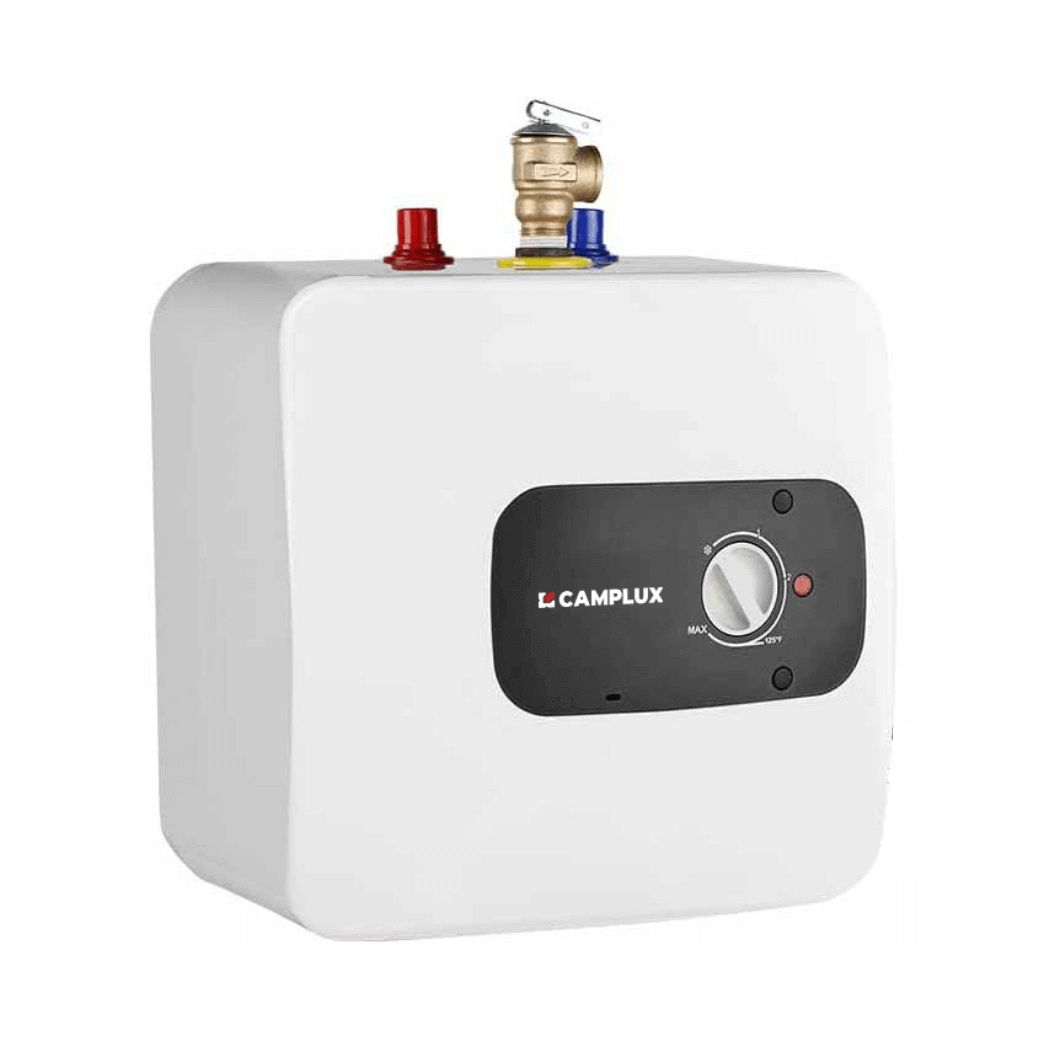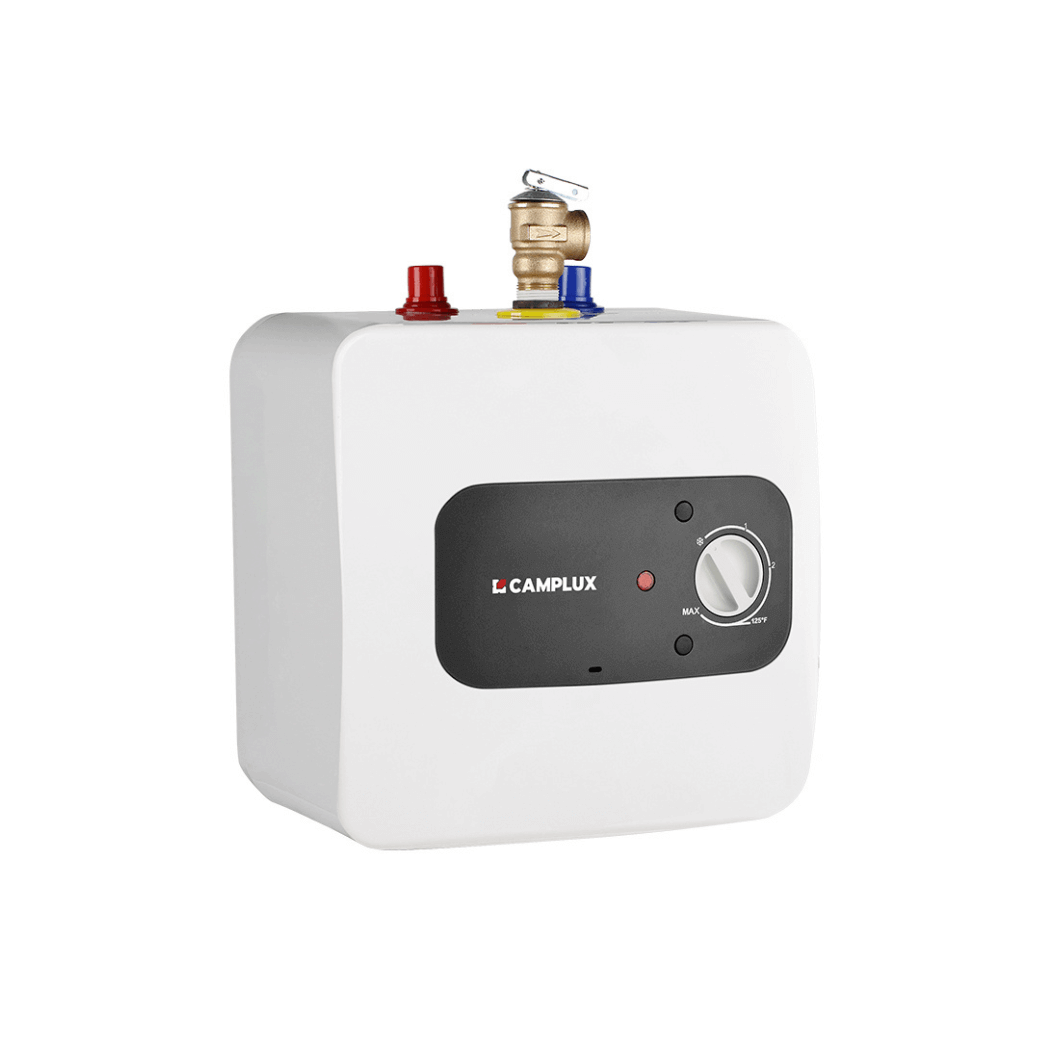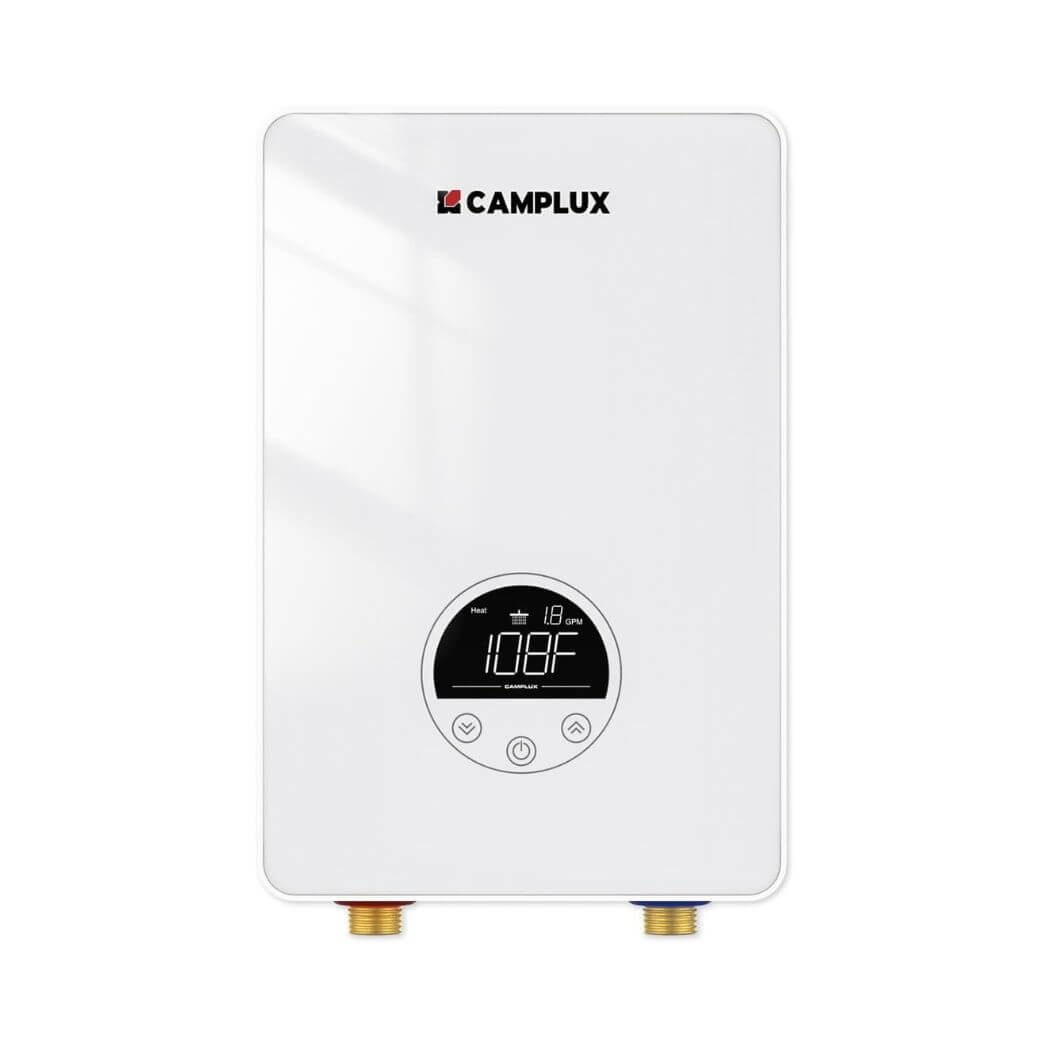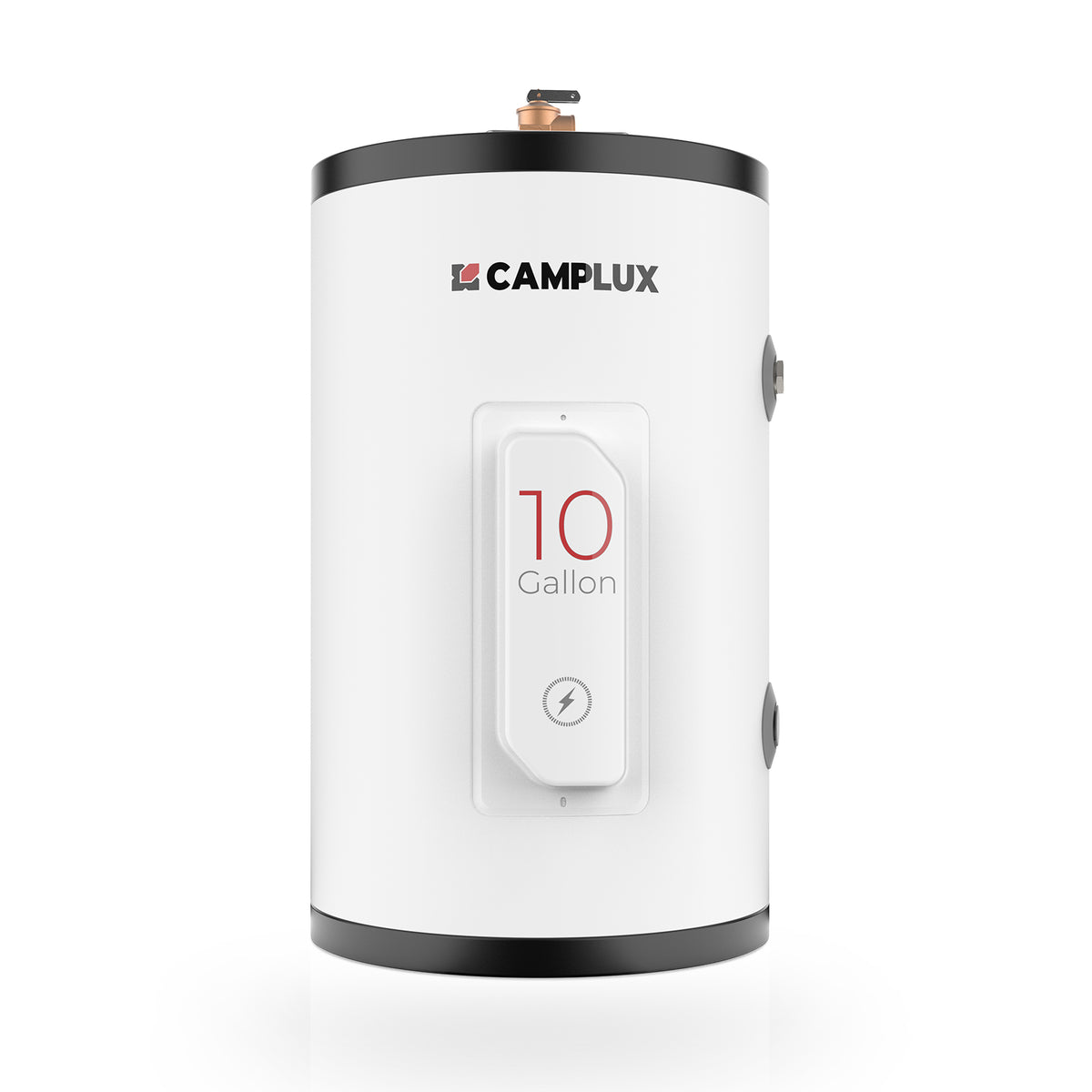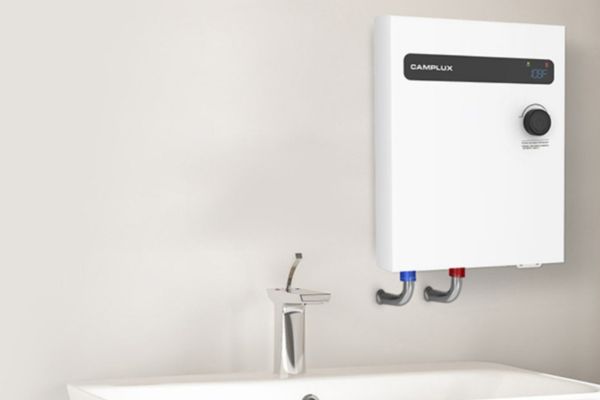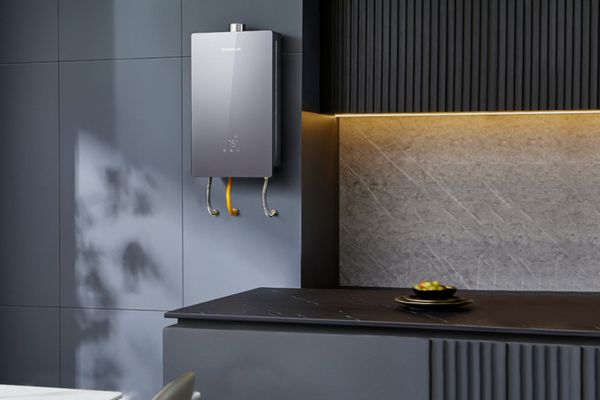When considering the purchase of a tankless water heater, one of the most crucial specifications to understand is the gallons per minute (GPM) rating. This figure represents the amount of hot water the unit can deliver in a minute and is essential for ensuring that your household's hot water needs are met efficiently. This article delves into the intricacies of GPM, its significance for tankless water heaters, and how to determine the appropriate GPM for your home, taking into account factors such as heating capacity, ETL certification, customer feedback, and the balance between price and performance.
Key Takeaways
- The ideal GPM for a tankless water heater should align with the household's hot water demand, with an average minimum flow rate of 3.25 GPM as a reference point.
- Heating capacity, measured in BTUs, is directly linked to a tankless water heater's efficiency and should be factored into the GPM calculation for optimal performance.
- ETL certification is an indicator of a tankless water heater's safety and efficiency, impacting both GPM and energy consumption, and should be a consideration in the selection process.
- Customer reviews and ratings are valuable resources for assessing real-world GPM performance and reliability, and they can influence the decision-making process.
- Price is a significant factor, but it's important to find a balance between cost and GPM requirements, as investing in an efficient GPM water heater can lead to long-term savings.
Understanding GPM and Its Importance for Tankless Water Heaters
What is GPM and Why Does It Matter?
GPM stands for gallons per minute, which is the unit of measurement for the flow rate of water heaters. The flow rate is crucial because it determines how much hot water a tankless water heater can supply at any given time. A higher GPM means more hot water available for simultaneous use of multiple fixtures.
To understand the significance of GPM in practical terms, consider the following points:
- The average water heater should have a flow rate of at least 3.25 GPM.
- Tankless water heaters with a higher max GPM are often rated better in customer reviews.
- The total GPM required for a household can be calculated by adding the flow rates of appliances used at the same time.
Determining the right GPM for your home involves assessing peak hot water usage and ensuring your tankless water heater can meet that demand without running out.
Remember, selecting a water heater with an adequate GPM is essential for a continuous supply of hot water during peak usage times.
The Role of GPM in Tankless Water Heater Performance
The performance of a tankless water heater is significantly influenced by its gallons per minute (GPM) rating. The higher the GPM, the more hot water the unit can deliver simultaneously, catering to multiple demands within your household. It's essential to consider the maximum GPM when comparing tankless water heaters, as it indicates the peak flow rate the heater can achieve.
- Energy Efficiency: A unit with a suitable GPM for your needs can operate more efficiently.
- Simultaneous Usage: Higher GPM allows for multiple fixtures to be used at once without a drop in temperature.
- Size and Capacity: Ensure the GPM matches the size of your home and the expected usage.
The optimal GPM rating ensures that your tankless water heater performs reliably without wasting energy. Selecting a unit with an appropriate GPM can lead to cost savings and a consistent supply of hot water.
When evaluating tankless water heaters, it's also important to look at the heating capacity, measured in BTUs, and whether the unit is ETL certified, which can affect both GPM and energy consumption. Balancing these factors will help you find a water heater that meets your specific needs.
How to Determine the Required GPM for Your Home
When sizing a tankless water heater, it's crucial to understand the GPM requirements for household needs. The process involves calculating the total flow rate by adding up the GPM of all fixtures and appliances that may be used simultaneously. Here's a simple guide on how to calculate GPM for tankless water heaters:
- List all potential simultaneous uses of hot water in your home (e.g., shower, dishwasher, washing machine).
- Note the GPM for each use. This information can often be found in the user manuals or product specifications.
- Add up the GPMs for all listed uses to find the total flow rate needed at peak demand.
Remember, the goal is to ensure that your tankless water heater can meet the peak hot water demand without running out of capacity.
By accurately determining your home's peak GPM demand, you can select a tankless water heater that operates efficiently and effectively, providing a continuous supply of hot water when you need it most.
Evaluating Heating Capacity and Its Impact on GPM
The Relationship Between BTUs and Water Heating Efficiency
The efficiency of a tankless water heater is closely tied to its BTU (British Thermal Unit) rating, which measures the energy required to heat water. Higher BTU ratings generally indicate a heater's capacity to heat more water faster, translating to a higher gallons per minute (GPM) output. However, it's crucial to balance BTU output with actual household needs to avoid unnecessary energy consumption.
Italics are used to emphasize the importance of matching the heater's capacity with the demand to ensure energy efficiency. For instance, a heater with a high BTU rating might be overkill for a single bathroom, whereas it would be appropriate for a home with multiple bathrooms.
Here's a simplified breakdown of how BTUs correlate with water heating efficiency:
- Low BTU Output: Suitable for smaller applications, may struggle to provide hot water for multiple fixtures simultaneously.
- Medium BTU Output: Adequate for average-sized homes, can handle several hot water demands at once.
- High BTU Output: Ideal for large homes or commercial settings, provides rapid heating and strong GPM performance.
Remember, the goal is to select a tankless water heater with a BTU rating that aligns with your specific hot water needs to achieve the best balance between performance and energy efficiency.
Calculating the Necessary Heating Capacity for Optimal GPM
To ensure your tankless water heater operates at peak efficiency, calculating the necessary heating capacity is crucial. Heating capacity, measured in BTUs (British Thermal Units), directly influences the GPM (Gallons Per Minute) your heater can deliver. A higher BTU rating typically means the heater can produce more hot water faster, catering to higher GPM demands.
When sizing your tankless water heater, consider the temperature rise required. This is the difference between the incoming water temperature and your desired output temperature. For example, if your incoming water is at 50 degrees Fahrenheit and you want it to be 120 degrees, you need a temperature rise of 70 degrees.
To accurately determine the heating capacity needed for optimal GPM, add up the flow rates of fixtures you plan to use simultaneously. This total flow rate, combined with the required temperature rise, will guide you in selecting the right heater.
Here's a simple table to help you understand the relationship between flow rate, temperature rise, and heating capacity:
| Fixture | Flow Rate (GPM) | Temperature Rise (°F) |
|---|---|---|
| Shower | 2.0 - 2.5 | 70 |
| Faucet | 0.5 - 1.5 | 70 |
| Dishwasher | 1.0 - 1.5 | 70 |
Remember, the total flow rate is the sum of all fixtures' flow rates during peak usage. This, along with the temperature rise, will help you calculate the necessary BTUs for your tankless water heater.
Comparing Heating Capacities Across Different Models
When selecting a tankless water heater, it's crucial to compare the heating capacities of various models to ensure you're getting the best performance for your needs. Heating capacity, measured in BTUs (British Thermal Units), directly influences the unit's ability to raise water temperature efficiently.
For instance, a model with a higher BTU rating will generally provide a better GPM (Gallons Per Minute) output, accommodating a larger demand for hot water. However, this often comes with a higher electrical demand, as seen in models requiring multiple circuit breakers.
It's a balancing act between power consumption and heating efficiency. The right model for your home should align with your specific hot water requirements without overburdening your electrical system.
Remember, while a high BTU rating is desirable, it's important to consider the overall efficiency and whether the unit is ETL certified for safety and energy consumption standards.
The Significance of ETL Certification in Tankless Water Heaters
Understanding ETL Standards and Their Relevance
ETL certification is a mark of quality and safety for tankless water heaters. It indicates that a product has been tested and meets the necessary standards for performance and safety. The presence of an ETL mark is a reliable indicator of a product's compliance with North American safety standards. This certification is particularly important for tankless water heaters, as it assures consumers that the product will operate safely and efficiently.
When considering a tankless water heater, it's essential to look for the ETL mark. Here's a simple list to help you understand the relevance of ETL standards:
- Ensures product safety
- Confirms high-quality manufacturing
- Validates adherence to North American safety standards
- Provides a benchmark for comparing different models
ETL certification not only contributes to the safety of a water heater but also impacts its energy consumption and overall performance. By choosing a product with ETL certification, homeowners can be confident in their investment.
How ETL Certification Affects GPM and Energy Consumption
An ETL certification is not just a badge of safety; it's a testament to a tankless water heater's efficiency and reliability. When a water heater is ETL certified, it signifies compliance with North American safety standards, ensuring that the appliance operates within the expected energy consumption levels. This certification can influence the GPM (Gallons Per Minute) rating by ensuring the heater performs optimally without unnecessary energy waste.
The ETL mark is an assurance that your tankless water heater will not only be safe but also energy-efficient, contributing to lower utility bills and a reduced environmental footprint.
Here's how ETL certification correlates with GPM and energy consumption:
- Safety: Ensures the heater meets strict safety guidelines.
- Efficiency: Promotes energy-saving features that can enhance GPM.
- Reliability: Indicates a product's adherence to quality standards, which can affect its longevity and consistent GPM output.
In the context of tankless water heaters, a higher GPM rating is often sought after. However, it's crucial to consider the energy efficiency of the unit to ensure that a high GPM doesn't lead to excessive energy bills. The ETL certification helps consumers identify products that strike the right balance between high performance and energy conservation.
Selecting an ETL Certified Tankless Water Heater for Safety and Efficiency
When choosing a tankless water heater, safety and efficiency are paramount. An ETL certification signifies that the product meets North American safety standards, ensuring that the water heater is not only efficient but also safe for residential use. This certification is a testament to the product's compliance with rigorous testing and quality control measures.
ETL certified tankless water heaters often exhibit superior performance in terms of gallons per minute (GPM), which is crucial for delivering hot water on demand. To aid in the selection process, consider the following list of top-rated tankless water heaters of 2024, all of which boast ETL certification:
- EcoSmart ECO 27
- Rheem 18kw Tankless Electric Water Heater
- Stiebel Eltron DHC Trend Point-of-Use Electric Tankless Water Heaters
- Rinnai RU160iN RU Model Series
Remember, a higher GPM rating is not the only factor to consider. It's essential to balance GPM with your home's specific hot water needs and energy consumption goals.
Lastly, it's beneficial to review customer feedback and ratings, which can provide real-world insights into the GPM performance and reliability of these heaters. For instance, the Stiebel Eltron DHC Trend model has received a customer rating of 4.2, reflecting its excellent pricing, very good max GPM, and great customer reviews.
Incorporating Customer Feedback and Ratings in GPM Consideration
Analyzing Customer Reviews for Real-World GPM Performance
When considering a tankless water heater, the gallons per minute (GPM) rating is a crucial factor that determines how well the unit will meet your hot water needs. Customer reviews offer valuable insights into the real-world performance of GPM for various models. These reviews can highlight discrepancies between advertised and actual GPM rates, providing a more accurate picture of what to expect.
Customer feedback often includes detailed accounts of how the water heater performs under different conditions, such as simultaneous showers or appliance use. This qualitative data is essential for understanding the practical implications of a heater's GPM rating. To illustrate, here's a summarized table of customer ratings and GPM performance for popular tankless water heaters:
| Model | Max GPM | Customer Rating |
|---|---|---|
| Camplux TEW 27 | Great | 4.2 |
| Titan N-120 | Good | 4.1 |
| Rinnai RU160iN | Great | 4.1 |
| Rheem 18kw | Great | 4.2 |
| Eemax 27kW | Very good | 4.1 |
It's important to note that while high GPM ratings are appealing, they must be matched with actual user experiences to ensure the unit can deliver as promised. This is where customer reviews become an indispensable resource.
By analyzing these reviews, potential buyers can make informed decisions and select a water heater that not only boasts a high GPM but also lives up to those expectations in everyday use.
The Influence of Customer Ratings on Product Reliability
Customer ratings serve as a crucial barometer for the reliability of tankless water heaters. A high percentage of positive ratings typically indicates a product that meets or exceeds user expectations. Conversely, a significant number of negative reviews can signal potential issues with performance or durability. Customer reviews often highlight important factors such as energy efficiency, hot water demand, ease of installation, and overall satisfaction with the product.
When considering customer ratings, it's essential to look beyond the surface. Analyzing the content of reviews can provide deeper insights into the product's real-world performance and reliability.
Here's a breakdown of customer ratings for a popular tankless water heater model:
| Star Rating | Percentage |
|---|---|
| 5 stars | 70% |
| 4 stars | 15% |
| 3 stars | 4% |
| 2 stars | 3% |
| 1 star | 7% |
This table reflects not just the satisfaction levels but also the trustworthiness of the product as perceived by the consumers. It's important to note that the overall star rating is not a simple average but is calculated considering factors like the recency of a review and the reviewer's purchase verification.
Leveraging User Experiences to Gauge GPM Accuracy
When selecting a tankless water heater, user experiences offer invaluable insights into the real-world performance of a unit's gallons per minute (GPM). Customers who have already installed and used a particular model provide feedback that can highlight discrepancies between advertised and actual GPM rates. This feedback is especially crucial for understanding how a heater performs under various conditions.
Customer reviews and ratings are a treasure trove of information, revealing not just satisfaction levels but also the practical GPM output in everyday use. To illustrate, consider the following table summarizing user ratings and reported GPM accuracy for several popular tankless water heaters:
| Model | Customer Rating | Reported Max GPM | Price |
|---|---|---|---|
| Camplux TEW 27 | Great | Great | $513.20 |
| Stiebel Eltron DHC | Great | Very good | Varies |
| Eemax 27kW | Very good | Very good | $513.95 |
| Titan N-120 | Great | Good | $300.00 |
| Rheem 18kw | Great | Great | Varies |
By cross-referencing customer ratings with reported GPM, potential buyers can better predict the performance of their prospective tankless water heater. It's important to consider that while high ratings are promising, they should be balanced with personal GPM requirements and budget constraints.
Ultimately, leveraging user experiences not only helps in verifying GPM accuracy but also assists in making a more informed decision that aligns with individual needs and expectations.
Price Versus Performance: Finding the Right Balance for GPM
Assessing the Cost-Effectiveness of High GPM Tankless Water Heaters
When considering the purchase of a tankless water heater, the cost-effectiveness of models with high GPM (Gallons Per Minute) is a critical factor. High GPM models are often more expensive, but they provide the convenience of supplying more hot water simultaneously to various fixtures.
To evaluate the cost-effectiveness, one must compare the initial price with the long-term benefits. For instance, a heater with a higher GPM may lead to reduced wait times for hot water, which can be a significant advantage for larger households.
The efficiency of a tankless water heater is not solely determined by its GPM rating, but also by its ability to meet the hot water demands without unnecessary energy expenditure.
Here's a simplified breakdown of factors to consider:
- PRICE (35%): The upfront cost is a substantial part of the decision-making process.
- CUSTOMER RATING (35%): Customer satisfaction can indicate the reliability and performance of the heater.
- MAX GPM (10%): The maximum flow rate contributes to the overall ranking, but it's not the sole factor.
It's essential to balance the initial investment against the expected performance and energy savings over time. A model with a slightly lower GPM but excellent customer reviews and a reasonable price might be more cost-effective in the long run than a high-GPM model with mediocre feedback and a steep price tag.
Balancing Budget and GPM Requirements
When selecting a tankless water heater, balancing the budget with the required Gallons Per Minute (GPM) is crucial. The initial cost should not be the sole deciding factor; instead, consider the long-term savings and efficiency. A higher GPM model may have a steeper price tag but can deliver more consistent hot water for multiple applications simultaneously.
To make an informed decision, compare the GPM and pricing of different models. Here's a simplified comparison table:
| Model | Max GPM | Price | Customer Reviews |
|---|---|---|---|
| Camplux TEW 27 | Great | $513.20 | Great |
| Titan N-120 | Good | $300.00 | Great |
| Rinnai RU160iN | Great | $1,172.43 | Great |
Remember, a tankless water heater is an investment in your home's comfort and utility costs. The right balance between budget and GPM will ensure you're not paying for more capacity than you need, or saving money at the expense of your comfort.
It's also important to factor in the heating capacity and whether the unit is ETL certified, as these can impact the overall performance and safety of the water heater. By considering all these aspects, you can find a tankless water heater that meets your minimum GPM capacity and fits within your budget.
The Long-Term Savings of Investing in an Efficient GPM Water Heater
Investing in a tankless water heater with an efficient gallons per minute (GPM) rating is not just about immediate performance—it's about the long-term savings and benefits. These units are designed to be energy efficient, using electricity only when needed, which translates to lower utility bills over time.
With a lifespan that can extend up to 20 years, the return on investment for a high GPM tankless water heater is substantial when compared to traditional tank-type heaters that typically last 8 to 12 years. Regular maintenance can further prolong the life and efficiency of the unit.
The savings from a tankless water heater, as highlighted by the experience of unlimited hot water with an 11 GPM unit, are significant. Compared to tank-type heaters, tankless options can save you between 27 to 50 percent in fuel costs. These savings accumulate, making the investment worthwhile.
Here's a quick comparison of potential savings over time:
| Year | Traditional Heater Cost | Tankless Heater Cost | Savings |
|---|---|---|---|
| 1 | $500 | $300 | $200 |
| 5 | $2500 | $1500 | $1000 |
| 10 | $5000 | $3000 | $2000 |
| 15 | $7500 | $4500 | $3000 |
| 20 | $10000 | $6000 | $4000 |
The table above is a simplified example, but it clearly shows how the efficiency of a tankless water heater can lead to significant cost savings over its lifetime.
Conclusion
In summary, determining the right gallons per minute (GPM) for your tankless water heater is crucial for ensuring a consistent supply of hot water that meets your household's needs. Factors such as the average flow rate, heating capacity (BTUs), and certifications like ETL should be carefully considered. Additionally, balancing the cost with customer ratings and the maximum GPM is essential for finding the best value. Remember that the GPM will vary based on the temperature setting and the mix of hot and cold water usage. By taking into account all these aspects, you can make an informed decision that will provide you with efficient and reliable hot water delivery.
Frequently Asked Questions
What is GPM and why is it important for tankless water heaters?
GPM stands for Gallons Per Minute and measures the flow rate of water through the water heater. It's crucial for tankless water heaters because it determines the amount of hot water that can be delivered simultaneously to various fixtures in your home.
How do I calculate the required GPM for my home?
To calculate the required GPM, add up the flow rates of all fixtures that may need hot water at the same time. Ensure the tankless water heater can meet or exceed this combined flow rate to avoid inconsistently delivered hot water.
What is the significance of a tankless water heater's heating capacity in BTUs?
The heating capacity, measured in British Thermal Units (BTUs), indicates the amount of energy your tankless water heater uses to heat water. A higher BTU rating means the heater can increase the water temperature more quickly and handle a higher GPM.
Why should I choose an ETL certified tankless water heater?
ETL certification ensures that the tankless water heater meets North American safety standards. Choosing an ETL certified model ensures safety, performance, and may also affect the GPM and energy consumption positively.
How do customer ratings influence the reliability of tankless water heaters?
Customer ratings reflect real-world performance and satisfaction. High ratings typically indicate reliable GPM delivery, efficient heating, and overall satisfaction with the water heater's performance.
Should price be a deciding factor when selecting a tankless water heater based on GPM?
While price is an important consideration, it should be balanced with GPM requirements and efficiency. Investing in a higher-priced, efficient model can lead to long-term savings on energy bills despite the initial cost.
